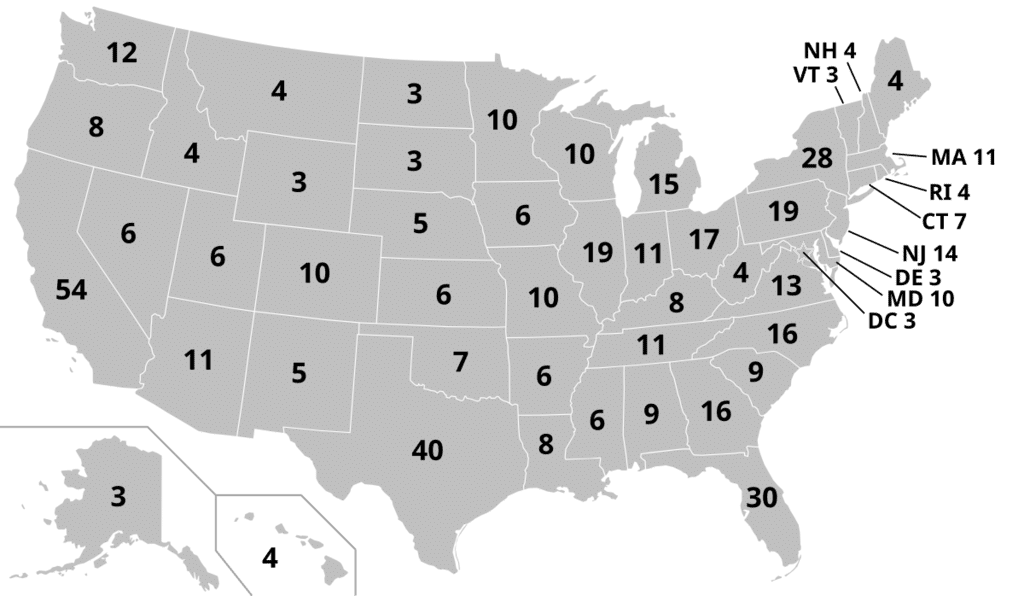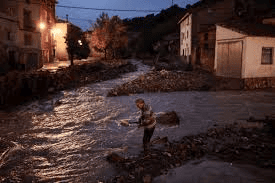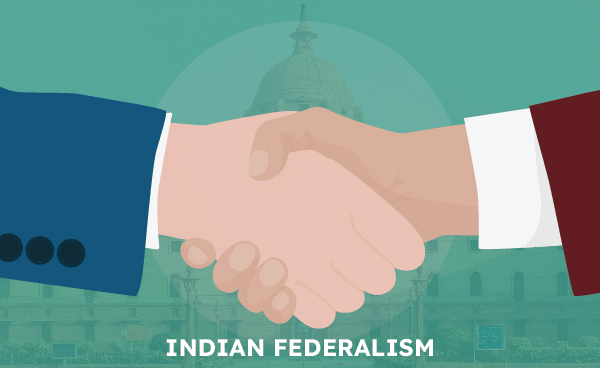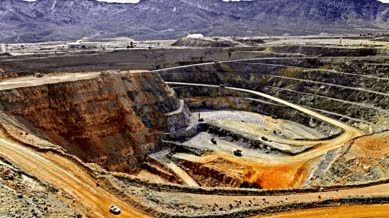UPSC Daily Current Affairs- 1st November 2024 | Current Affairs & Hindu Analysis: Daily, Weekly & Monthly PDF Download
GS2/Polity
Understanding the U.S. Electoral College System
Source: The Hindu
 Why in News?
Why in News?
On November 5, Americans will cast their ballots for their 47th president in the 60th quadrennial elections, primarily between Republican candidate and former President Donald Trump and Vice-President and Democrat Kamala Harris. Rather than winning the popular vote, the U.S. Constitution stipulates that the winner is the candidate who clinches the most electoral college votes.
What is the Electoral College?
The Electoral College is a mechanism used to indirectly elect the President and Vice President of the United States. It operates through three main stages:
- Selection of electors by popular vote.
- Voting by these electors for President and Vice President.
- Counting of electoral votes by Congress to determine the election outcome.
Historical context and rationale for the Electoral College:
The founding fathers deliberated over two main methods of electing the President:
- Congressional election of the President: This model was inspired by parliamentary systems where Congress would elect the President.
- Direct popular vote: This option aimed to reduce political collusion but raised concerns about populous states dominating the process.
The compromise reached was the Electoral College, designed to balance state influence and prevent centralization of power.
Structure of the Electoral College:
- Total electors: The Electoral College comprises 538 electors, and a candidate must secure at least 270 electoral votes to win the presidency.
- Elector distribution: Each state's number of electors corresponds to its congressional delegation, which includes House members plus two Senators. For instance, California, the largest state, has 54 electors, while smaller states like Alaska and Vermont have just three.
- Elector selection: Political parties nominate electors ahead of the election, usually selecting party members or affiliates.
- Electing the electors: On Election Day, voters indirectly choose electors by voting for a presidential candidate. Most states utilize a "winner-takes-all" system, allocating all electoral votes to the candidate with the most popular votes. However, Maine and Nebraska employ a proportional system, dividing electoral votes based on congressional district wins.
- Duties and voting by electors: In December, electors convene to formally cast their votes for the President and Vice President. Although electors typically vote in alignment with their party's candidate, there are no federal laws mandating this. Many states have laws enforcing elector loyalty, and instances of "faithless electors" are rare, as evidenced in the 2016 election.
Arguments For and Against the Electoral College:
- For:
- Founders' intent: The Electoral College was established to ensure that only highly qualified individuals could become President.
- National cohesiveness: Supporters argue that it requires candidates to gain support from a wide geographic area, preventing large states or cities from overshadowing smaller ones.
- Criticisms:
- Vote disparity: Voters in larger states tend to have less influence per individual vote compared to those in smaller states.
- Swing state focus: Candidates often concentrate their efforts on swing states, neglecting those where one party generally has a stronghold.
- Faithless electors: The presence of electors bound to party lines contradicts the initial purpose of the Electoral College, which aimed to screen candidates effectively.
Electoral College for the Election of the President of India:
- Constitutional basis: The Electoral College is established under Article 54 of the Indian Constitution, ensuring federal balance by granting states representation relative to their populations, thereby upholding parity between the Union and the states.
- Composition:The Electoral College for electing the President comprises:
- Elected members of Parliament (MPs) from both the Lok Sabha (House of the People) and the Rajya Sabha (Council of States).
- Members of the Legislative Assemblies (MLAs) from all states and Union Territories with Legislative Assemblies (for example, Delhi, Puducherry, and Jammu & Kashmir).
- Vote value: The voting method employed is the Single Transferable Vote (STV) system, which allows electors to rank candidates in order of preference while maintaining the confidentiality of their votes through a secret ballot.
- Election process: To win, a candidate must secure more than 50% of the total votes, known as an absolute majority. If this threshold is not met in the first count, the candidate with the fewest votes is eliminated, and their votes are transferred according to subsequent preferences until a candidate achieves the necessary majority.
- Significance: This carefully structured system ensures that the President of India is elected through a representative process that respects both the federal and democratic principles enshrined in the Constitution.
GS2/Governance
Supreme Court’s Landmark Judgment on Child Marriages in India
Source: India Today
Why in news?
A recent ruling by the Supreme Court in the case of Society for Enlightenment and Voluntary Action v. Union of India has significantly altered the approach towards child marriages in India. The judgment emphasizes addressing the challenges faced by victims rather than solely focusing on criminal prosecution.
Background:
- The Supreme Court's ruling pivots the focus from punitive measures to the well-being and empowerment of children affected by early marriages.
- The Court established guidelines to enhance the Prohibition of Child Marriage Act (PCMA), stressing the necessity for state governments to enforce these directives effectively.
- It underlines the need for a more supportive approach for those already in child marriages, allowing them to regain autonomy.
Child Marriages in India:
- The National Family Health Survey (NFHS) indicates a reduction in the percentage of women aged 20-24 married before 18 from 47.4% in 2005 to 23.3% in 2021.
- Despite this progress, India is still striving to meet the United Nations' Sustainable Development Goal (SDG) of eradicating child marriage by 2030.
Institutional Approach:
- Traditionally, efforts have been aimed at prevention and criminal prosecution, as seen in Assam where mass arrests were made of men marrying minors.
- However, such legal actions may not resolve the complex realities surrounding child marriage, especially when young individuals marry to avoid difficult circumstances.
Legal Framework for Child Marriage in India:
- The Prohibition of Child Marriage Act, 2006 (PCMA) defines child marriage as a union where the husband is under 21 or the wife under 18.
- Such marriages are deemed "voidable" until one party, who was a minor, chooses to annul it.
- In certain states, like Karnataka and Haryana, child marriages are considered void from inception.
- Annulment under PCMA restores individuals to their unmarried status without needing additional grounds, unlike divorce, which requires specific justifications.
Other Civil Remedies under PCMA:
- The Act includes support measures such as maintenance, residence orders, and the return of wedding gifts to assist those leaving child marriages.
Challenges of Criminalizing Child Marriage:
- While child marriages can be annulled, laws like POCSO and Bharatiya Nyaya Sanhita (BNS) also criminalize activities related to child marriage.
- Criminalization may inadvertently harm the families of married minors, leading to social isolation and limited access to healthcare services.
- Research indicates that criminal laws often disproportionately affect self-initiated marriages, particularly where young couples elope.
Key Features of the Supreme Court’s Judgement:
- Child Betrothals: The judgment identifies a gap in PCMA regarding child betrothals, which are often arranged to delay marriage, circumventing the law. The Court has urged Parliament to criminalize this practice.
- Gendered Impact: The ruling recognizes that both boys and girls experience adverse effects from child marriage; while girls often endure abuse, boys face pressures of premature responsibilities.
- Interaction with Personal Laws: The Court noted the ambiguity surrounding how PCMA interacts with personal laws across different religious communities, suggesting future legislative clarity is needed.
- Protecting Childhood: The Court stressed that child marriage violates the fundamental right to childhood, pushing minors into adult roles and perpetuating socio-economic challenges.
- Strengthening Enforcement: The Court called for the appointment of Child Marriage Prohibition Officers (CMPOs) in districts to focus exclusively on preventing child marriages.
Significance of Supreme Court’s Judgement:
- The judgment highlights the social and economic difficulties faced by those trying to escape child marriages.
- It calls for comprehensive support measures, including:
- Skill Development & Vocational Training: To help women gain economic independence after exiting child marriages.
- Rehabilitation & Follow-Up Support: To facilitate the reintegration of individuals into society.
- Compensation: Consideration for financial support to women through victim support schemes.
- Empowering Women within Child Marriages: The judgment emphasizes the need for tools to assert rights regarding health, employment, and education for those who choose to remain in their marriages.
- The focus on sex education for adolescents aims to empower young individuals in navigating challenges within such marriages.
Conclusion:
- The judgment advocates for a balanced strategy that combines prevention with empowerment, taking into account the evolving nature of child marriages.
- This approach aligns with global best practices, emphasizing socio-economic and educational interventions over solely punitive measures.
GS3/Environment
DANA and deadly floods in Spain
Source: Reuters

Why in news?
On October 28, severe rainfall impacted southern and eastern Spain, leading to significant flooding that submerged towns, disrupted transportation, and affected millions of residents. The flash floods in Valencia have tragically resulted in at least 64 deaths. In many areas, rainfall exceeded a month's worth within a single day, with regions in Andalusia receiving four times the typical October rainfall. Spain’s meteorological agency reported that between 150 to 200 liters of rain per square meter fell in a mere two hours. This extreme weather is linked to the phenomenon known as “gota fría” (cold drop) or DANA (isolated high-altitude depression), a recurrent weather pattern that brings heavy precipitation.
About
Cumulonimbus clouds are large, towering formations commonly associated with thunderstorms and severe weather conditions. They develop when warm, moist air rises quickly in unstable atmospheric settings and are characterized by their massive, anvil-shaped tops, which can reach heights exceeding 12,000 meters (39,000 feet). At lower levels, these clouds are composed of water droplets, while at higher altitudes, they contain ice crystals due to colder temperatures.
Key Characteristics of Cumulonimbus Clouds
- Vertical Growth: These clouds can extend deep into the atmosphere, frequently reaching the stratosphere.
- Thunderstorm Clouds: They are responsible for severe weather events like thunderstorms, heavy rainfall, hail, lightning, and even tornadoes.
- Anvil Shape: The tops of these clouds spread out into a flat, anvil-like formation as they encounter the upper atmospheric layers.
- Dense and Dark: The underside of these clouds appears dark due to the high concentration of water droplets, which obstruct sunlight.
How DANAs form?
DANA, which stands for “depresión aislada en niveles altos” (isolated depression at high altitudes), occurs when cold air descends over the warm Mediterranean waters, leading to atmospheric instability. This process creates a significant temperature differential between the various atmospheric layers, causing warm, moist air to rise rapidly, resulting in the formation of dense cumulonimbus clouds that produce heavy rainfall.
Role of the Polar Jet Stream
The polar jet stream is a high-altitude, fast-moving wind current that separates polar air from tropical air. Its interaction can intensify rainfall patterns associated with DANA in Spain.
- Cold Air Separation: A pocket of cold air can detach from the polar jet stream and descend over the Mediterranean Sea.
- Atmospheric Instability: The stark temperature contrast between the cold and warm air causes the warm air to rise rapidly, leading to atmospheric instability.
- Cumulonimbus Cloud Formation: As the rising warm air becomes saturated with water vapor, it forms dense cumulonimbus clouds.
Occurrence
DANAs are more prevalent during autumn and spring when temperature variations are more significant. These weather events can also trigger large hailstorms and tornadoes.
Affected regions
These clouds typically produce heavy rain across various parts of Spain, Portugal, Italy, France, and other Mediterranean regions.
Increased Frequency and Intensity of Cold Drops
Recent observations indicate that cold drops have become more frequent and intense, affecting a broader geographical area. Spain’s meteorological agency has noted that heavy rainfall from cold drops is now impacting inland areas like Madrid, which previously experienced such significant rainfall less often.
Impact of Climate Change
This increase in frequency and intensity is partly linked to rising global temperatures that enable warmer air to retain more moisture, resulting in heavier precipitation. Additionally, record-high sea surface temperatures in the Mediterranean Sea have worsened the situation, with notable peaks observed in August. Experts have pointed out that the formation of cold drops is influenced by the interaction of cold air with increasingly warmer surfaces, contributing to this phenomenon.
GS2/Polity
Census: A Crucial Element for Delimitation and Women's Reservation Quota
Source: Indian Express

Why in news?
The delayed Census, anticipated to start next year and finish by 2026, is vital for two significant political processes: delimitation of constituencies and the establishment of a women's reservation quota in elected bodies.
Delimitation Commission
- Definition: In India, delimitation refers to the process of redrawing the boundaries of Lok Sabha and Legislative Assembly constituencies.
- Purpose: This exercise may adjust the number of seats allocated to each state or Union Territory (UT) in the Lok Sabha and Legislative Assemblies. For instance, Delhi, a union territory with its own legislative assembly, has 7 Lok Sabha constituencies while having 70 constituencies in the Legislative Assembly.
- Importance of Delimitation: Delimitation is essential for ensuring that constituencies are redrawn based on the most recent Census data, aiming for equitable population distribution across constituencies. This process seeks to provide all political parties and candidates a fair opportunity during elections by balancing the number of voters in each constituency.
- Constitutional Basis: Articles 82 and 170 of the Constitution authorize Parliament to adjust the number of seats in the Lok Sabha and State Legislative Assemblies after every Census. To oversee this process, Parliament enacts specific laws, including the Delimitation Commission Acts of 1952, 1962, 1972, and 2002. Notably, there was no Delimitation Commission Act after the 1981 and 1991 censuses.
- Last Delimitation: The most recent delimitation was conducted in 2002, based on the 2001 Census data, under the Delimitation Commission Act of 2002. The next delimitation process is set to occur post-2026, with existing constituency boundaries having been adjusted but the overall number of seats remaining unchanged since 1976.
- Current Situation: Currently, there are 543 Lok Sabha seats and 4,123 seats in state assemblies, based on the 1971 Census for Lok Sabha and the 2001 Census for state assemblies, which correspond to populations of 81 crore and 102.87 crore, respectively. Given an estimated population of 1.5 billion for the upcoming Census, a significant increase in the number of seats is expected.
- Challenges Ahead: There are ongoing debates about whether the 2021 Census data, expected to be collected in 2025 and published in 2026, can be utilized for readjustment as per Article 82. Additionally, constitutional amendments may be necessary to facilitate delimitation before the next Lok Sabha elections, particularly concerning Articles 82, 81, 170, and 55.
- Regional Disparities: Issues that caused delays in previous delimitation efforts in 1976 and 2001 still persist. For instance, southern states with effective population control measures could face reduced representation if the increase in seats follows population growth trends predominantly seen in northern states.
- Composition: The Delimitation Commission is a high-powered entity responsible for defining and redefining the boundaries of constituencies for state assembly and Lok Sabha elections. It is appointed by the President and collaborates with the Election Commission of India.
- Members
The Commission is composed of:
- A retired or serving Supreme Court Judge (Chairperson)
- An Election Commissioner
- State Election Commissioners relevant to the constituencies
- Legal Authority: The orders issued by the Commission possess the force of law and cannot be contested in any court. While these orders are presented before the Lok Sabha and concerned state legislative assemblies, no modifications can be made to them.
Women’s Reservation
- Constitutional Amendment: In September 2023, the 128th Constitutional Amendment was enacted, providing a 33% reservation for women in the Lok Sabha and state assemblies. However, this implementation relies on the next delimitation exercise, anticipated to follow the publication of the 2021 Census results, likely in 2026.
- Duration of Reservation: This reservation is set to remain in effect for a period of 15 years.
- Concerns Regarding Seat Allocation: For over 35 years, fears of losing seats have impeded the progress of women's reservation initiatives. A 33% reservation would mean that 182 out of 545 Lok Sabha seats would be allocated to women, reducing men's available seats from 467 to 363. If delimitation leads to an increase in Lok Sabha seats to 770, approximately 257 of those could be reserved for women, leaving 513 seats available for men, which would alleviate concerns among political parties and minimize disruptions for male politicians.
GS2/ Polity and Governance
Indian Federalism Is a Dialogue
Source: Indian Express

Why in News?
The Indian Constitution is not just a legal document for experts; it impacts every citizen involved in democracy. Federalism in India, shaped by judicial interpretations and global challenges, reflects a dynamic relationship between states and the Centre, highlighting its potential for transformation.
Judicial Interpretations and Global Challenges
- Judicial interpretations play a crucial role in shaping the understanding and application of federalism in India.
- Global challenges, such as economic changes and social issues, also influence the federal structure.
Federalism as an Evolving Structure
- Federalism in India is not static; it evolves through cooperation and sometimes friction between the states and the central government.
- This evolution reflects the changing needs and dynamics of Indian society and governance.
Impact on Legal and Social Landscape
- The division of power between the Centre and the states, as outlined in the Constitution, has significant implications for India's legal and social framework.
- This division affects how laws are made, implemented, and interpreted across the country.
An Analysis of India’s Unique Approach to Federalism
Federalism as a Constitutional Choice
- India's choice of a federal structure in its Constitution was significantly influenced by the historical context of the Partition and the potential threats of secession at the time of independence.
- Unlike some nations, India did not explicitly mention federalism in its Constitution. Dr. B.R. Ambedkar used the term "union" to emphasize the unbreakable unity of the Indian state.
- The federal framework is evident through the independent legislative powers granted to both the Centre and the states, highlighting the autonomy of states within their designated areas.
A Balanced Approach
- The Seventh Schedule of the Indian Constitution exemplifies a balanced federal approach by categorizing subjects into the Union List, State List, and Concurrent List.
- This arrangement enables both the Centre and the states to legislate on specific subjects while ensuring the protection of fundamental rights across the board.
- The Constitution’s provisions against discrimination are not solely the domain of the Centre; state-level legislative actions also play a crucial role, showcasing an innovative method of safeguarding rights and dignity throughout different regions.
In Contrast to Federalism Elsewhere
- India's federal approach differs markedly from historical federalism in the United States, where states' rights were once used to justify discriminatory practices such as slavery.
- In India, federalism is a tool to combat discrimination, with both the Centre and the states working together to ensure equal rights across various regions.
- India’s federal structure, which emphasizes political integration while balancing self-rule and shared rule, cannot be easily compared to federalism in other countries like the U.S.
- In the U.S., states have distinct sovereignty, whereas in India, the Centre and the states have overlapping powers within a unified constitutional framework.
- This federal design is tailored to India's vast diversity, addressing social and regional disparities while maintaining national unity.
The Role of Indian Judiciary in the Transformation of Indian Federalism
The Kesavananda Bharati Case and the Basic Structure Doctrine
In the 1973 landmark case Kesavananda Bharati v. State of Kerala, the Supreme Court established the basic structure doctrine.
- Basic Structure Doctrine: The Supreme Court ruled that certain parts of the Constitution are so fundamental that they can't be changed, even by a strong majority in Parliament.
- Federalism: Included as a core feature, highlighting its importance in maintaining a balance between central and state powers.
- This case marked a crucial point in Indian legal history, emphasizing that federalism is a key pillar of India's democracy and constitutional framework.
- The court's decision reinforced federalism as a vital check on central power, ensuring states retain significant rights and autonomy.
- By recognizing federalism as a basic feature, the judiciary strengthened the principle of decentralized governance.
- This case set the stage for the judiciary's ongoing role in maintaining the federal balance and supporting state autonomy.
Centripetal and Centrifugal Eras in Judicial Interpretation
The Centripetal Era
- Before the Supreme Court's decision in S.R. Bommai v. Union of India (1994), judicial interpretation favored stronger central control over states.
- During this period, the judiciary upheld constitutional provisions that granted the Centre significant authority over states, particularly through emergency powers and residuary legislative authority.
- For example, Article 356, which enables the Centre to impose President's Rule in states during a breakdown of constitutional machinery, was frequently invoked, sometimes with controversial motives.
- The judiciary often supported these interventions, reinforcing the Centre's dominance over state governments.
- The landmark case of S.R. Bommai in 1994 marked a significant shift towards the centrifugal era of judicial interpretation.
- In this case, the Supreme Court established that states are not mere extensions of the Centre and that the imposition of President's Rule must not be arbitrary or politically motivated.
- By asserting that the Centre cannot dissolve a state government unilaterally without judicial oversight, Bommai redefined federalism to safeguard states' rights and autonomy.
Judicial Intervention and Interpretation of Cooperative and Asymmetric Federalism
- In 1977, the Indian Supreme Court introduced the concept of cooperative federalism, advocating for a collaborative approach between the Centre and states to address conflicts and achieve shared developmental objectives.
- However, cooperative federalism is not the sole means of fostering federal relations. A 2022 judgment highlighted that Indian federalism also encompasses dialogues characterized by both cooperation and tension, emphasizing the importance of constructive negotiation between the two levels of government.
- This adaptable interpretation portrays federalism as a dynamic and interactive framework.
- Another distinctive feature of India's federalism is its asymmetry, where the Constitution acknowledges the country's diversity by allowing certain states to maintain unique relationships with the Union based on historical, regional, or cultural factors.
- Constitutional courts have refined this model, recognizing the necessity for states to have tailored provisions that protect their distinct identities within a cohesive national framework.
Federalism, Modern Governance Challenges and Ways Ahead
- In present-day India, federalism encounters new challenges that extend beyond traditional boundaries, including climate change, artificial intelligence, data privacy, and cybercrimes.
- The framers of the Constitution could not have foreseen these globalized concerns, which demand unified yet flexible responses.
- These issues necessitate adaptation from both the Centre and states, requiring the harmonization of their legislative capabilities and judicial practices to ensure that federalism facilitates, rather than obstructs, modern governance.
- Marc Galanter characterized the Indian Constitution as a radical readjustment, replacing old rights with new ones.
- Today, these new rights should encompass a focus on environmental preservation, technological rights, and data protection.
- The success of federalism lies in its ability to uphold fundamental constitutional values such as democracy, equality, dignity, and freedom, while simultaneously evolving to tackle complex contemporary issues that require cooperation across federal and state boundaries.
Conclusion
- Federalism in India represents the strength and flexibility of the constitution, shifting from a tool for political balance to a system that addresses modern challenges.
- The Indian Constitution has shown its ability to adjust federalism to cater to the needs of a society that is both diverse and complex.
- In the future, Indian federalism should be evaluated on its capacity to promote democracy, equity, and innovation, ensuring it serves not just as a governance framework but also as a means for social advancement.
GS3/ Environment and Ecology
Pranahita Wildlife Sanctuary
Source: Times of India

Why in News?
The decision by the National Board for Wildlife to delay road expansion projects is a response to increasing environmental concerns.
- This delay specifically impacts the Pranahita wildlife sanctuary, highlighting the significance of protecting wildlife habitats.
- There is a growing awareness about the need to balance development with the preservation of nature.
- Such decisions reflect a shift towards prioritizing ecological health over infrastructure expansion.
- By deferring these projects, the board is taking steps to ensure that wildlife conservation remains a key focus.
About Pranahita Wildlife Sanctuary:
- Location: Situated in the Adilabad district of Telangana, this sanctuary spans approximately 136 sq.km.
- Landscape: Set against the picturesque backdrop of the Deccan plateau, it features thick deciduous teak forests. The Pranahita River borders the eastern boundary, while the Godavari River runs along the southern edge. The sanctuary is also noted for its prehistoric rock formations.
- Topography: The area is characterized by hilly terrain, dense forests, and plateaus.
- Flora: Common plants and trees in the sanctuary include Dalbergia sissoo, Ficus spp., Dalbergia latifolia, Dalbergia paniculata, Pterocarpus marsupium, among others.
- Fauna: The sanctuary is renowned for its population of Blackbuck and is home to over 20 species of reptiles, 50 species of birds, and 40 species of mammals. Notable mammals include tigers, leopards, rhesus monkeys, langurs, hyenas, wild dogs, sloth bears, and forest cats, among others.
GS2/ Polity and Governance
Tackle the issue of adjournments, case pendency
Source: The Hindu

Why in News?
President Droupadi Murmu has emphasized the need to reduce delays in the court system. During the District Judiciary Conference, she pointed out that frequent postponements pose significant challenges for poor and rural individuals seeking justice.
- The President highlighted that these delays create a sense of uncertainty for those in vulnerable communities, making them worry that their cases will take an excessively long time to resolve.
- By addressing court delays, the aim is to ensure that justice is more accessible and timely, particularly for those who may already face barriers in the legal system due to their economic or geographic circumstances.
Primary Causes of Case Pendency and Frequent Adjournments in Indian Courts:
Judge-Population Ratio: India has a low judge-to-population ratio, with only 21 judges per million people as of 2024. This is significantly below the Law Commission's recommendation of 50 judges per million.
Vacant Judicial Positions: Delays in filling judicial vacancies contribute to understaffed courts. High Courts currently have a 30% vacancy rate, adding pressure to the existing judges and leading to delays in the judicial process.
Additional Judicial Charges: Judges often have to manage multiple courts or take on specialized responsibilities. This spread of duties detracts from their ability to focus on primary cases, contributing to delays in the judicial process.
Complex Case Load: Court systems are burdened with a variety of cases, including civil, criminal, constitutional, and appeals. Many of these cases escalate to higher courts, creating severe backlogs and delays in the judicial process.
Lack of Judicial-Impact Assessment: New laws tend to increase the caseload without a proper assessment of their impact on court infrastructure, staffing, and resources. This oversight exacerbates delays in the judicial process.
Delay in Witness Availability: Witnesses are often unavailable when needed, which causes postponements in court hearings and adversely affects trial timelines.
How can technology be leveraged to reduce case pendency?
- Digitization of Case Records: Electronic records help reduce delays in case filing, retrieval, and transfer between courts.
- AI-Powered Case Management Systems: AI can assist in prioritizing cases, tracking progress, and predicting potential delays, allowing judges and clerks to streamline schedules more effectively.
- E-Courts and Video Conferencing: Virtual hearings can speed up proceedings, especially for remote cases or minor disputes, saving travel and scheduling time.
- Automation of Routine Processes: Automating administrative tasks such as case status updates, notifications, and scheduling can decrease clerical delays and enhance transparency for litigants.
- Data Analytics for Judicial Insights: Predictive analytics can aid in understanding case patterns, helping policymakers make data-driven decisions regarding judicial staffing and resources.
What reforms are necessary to improve judicial efficiency and reduce backlog? (Way forward)
- Filling Vacancies and Increasing Judge Numbers: Swift action is crucial for filling judicial vacancies and expanding sanctioned positions to address the needs of the population and the rising caseload.
- Implementing Judicial Impact Assessments: Adopting the recommendations of the Justice M. Jagannadha Rao Committee for pre-legislative impact assessments would ensure that new laws are accompanied by adequate resources.
- Expanding Mediation and Alternative Dispute Resolution (ADR): Enhancing mediation centers and promoting ADR methods can help resolve disputes outside of court, thereby reducing the burden on the judiciary.
- Dedicated Special Courts: Establishing well-staffed, specialized courts for specific categories, such as economic offenses or family disputes, can alleviate the strain on regular courts.
- No Additional Charge Policy for Judges: Assigning a single focus area to each judge ensures concentration on cases without overwhelming them, leading to increased efficiency and improved judgment quality.
- Periodic Judicial Training: Regular training on case management and technological tools can equip judges and court staff to adapt to evolving needs, minimizing inefficiencies.
GS3/Environment and Ecology
India Remains Highly Dependent on Imports of Critical Minerals
Source: Indian Express

Why in news?
The report titled India’s Hunt for Critical Minerals was recently released by the Institute for Energy Economics and Financial Analysis (IEEFA).
- This report highlights the importance of critical minerals for India’s economy and future growth.
- It discusses how these minerals are essential for various industries, including technology, renewable energy, and electric vehicles.
- The report emphasizes the need for India to secure a stable supply of these minerals to support its infrastructure and energy transition.
- It also outlines the challenges India faces in accessing these resources, including geopolitical issues and market competition from other countries.
- Furthermore, the report suggests that India should enhance its own mining capabilities and invest in recycling technologies to reclaim critical minerals from existing products.
- The importance of forming strategic partnerships with other nations to secure supply chains is also discussed in the report.
- Overall, the report calls for a comprehensive strategy to ensure that India can meet its future mineral needs effectively.
India's Energy Transition and Critical Minerals
- India, as the world's third-largest energy consumer, is moving towards a greener energy landscape. This shift is driven by global climate commitments, reduced reliance on fossil fuels, and the need for enhanced energy security.
- Critical minerals are essential for renewable technologies such as solar panels, wind turbines, electric vehicles, energy storage systems, as well as for defense and electronics.
- India faces challenges in securing these critical minerals due to supply disruptions and geopolitical factors.
- The country's reliance on imports, particularly from China, poses risks, as demonstrated by U.S.-China trade tensions in 2019.
- Ethical concerns such as child labor in cobalt mining and environmental impacts complicate the mining landscape, necessitating robust policy frameworks.
- The Indian government is actively working to improve domestic production through mining block auctions and the Critical Minerals Mission, aimed at enhancing refining and processing capabilities.
- India has also initiated a multi-pronged strategy to acquire critical minerals through international partnerships and domestic exploration.
Key Findings of Recent Report
The report examines five crucial minerals—cobalt, copper, graphite, lithium, and nickel—focusing on India's import dependency, trade dynamics, domestic availability, and price fluctuations.
- Import Dependency: India is heavily reliant on imports for critical minerals vital for its energy transition, especially lithium, cobalt, and nickel, with 100% dependence on imports for these minerals. Demand for these minerals is projected to more than double by 2030, while domestic mining production will take over a decade to ramp up.
- Minerals at Risk: There is a high import dependency for graphite (both natural and synthetic), lithium oxide, nickel oxide, copper cathodes, nickel sulphate, cobalt oxide, and copper ores. Some of these imports come from geopolitically risky countries.
- Geopolitical Risks: Countries such as Russia, Madagascar, Indonesia, Peru, and China present significant geopolitical risks for sourcing critical minerals. Imports of lithium oxide and nickel oxide are primarily from Russia and China, posing trade risks. India is especially reliant on China for synthetic and natural graphite. For copper and nickel, India mainly imports from Japan and Belgium, highlighting the need to diversify suppliers, with the U.S. being a significant copper producer.
Suggestions
- India aims to achieve 500 GW of non-fossil fuel-based electricity capacity by 2030, up from the current 201 GW. Meeting net-zero emissions by 2070 may require installing around 7,000 GW of renewable energy capacity.
- Government support in technology development and funding is crucial to promote domestic production of critical minerals, essential for meeting renewable energy targets.
- The report emphasizes the need for India to develop a strategic import policy to mitigate trade risks and strengthen international relationships for securing essential minerals.
- India can explore investment opportunities in resource-rich, friendly nations such as Australia, Chile, and some African countries like Ghana and South Africa.
|
55 videos|5389 docs|1141 tests
|
FAQs on UPSC Daily Current Affairs- 1st November 2024 - Current Affairs & Hindu Analysis: Daily, Weekly & Monthly
| 1. What is the U.S. Electoral College System and how does it work? |  |
| 2. What was the significance of the Supreme Court’s judgment on child marriages in India? |  |
| 3. How did DANA contribute to the deadly floods in Spain? |  |
| 4. Why is the census important for delimitation and women's reservation quota in India? |  |
| 5. What are the main challenges facing Indian federalism today? |  |





















